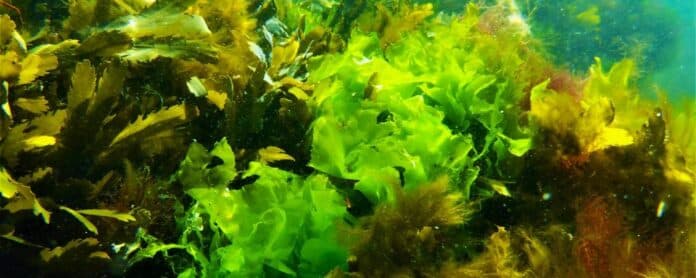A significant hazard to biodiversity is the introduction of plants, animals, and viruses into non-native settings. They can affect the genetic makeup of native populations, raise the risk of extinction, and change how ecosystems function. A significant route for introducing invasive species is human trade with species intended for cultivating plants and animals.
In the Baltic Sea region around Skagerak, there are many more green alga sea lettuce species than were previously believed. Twenty kinds of sea lettuce were discovered after 10,000 kilometers of coastline were studied by the University of Gothenburg, researchers.
Sea lettuce is the common name for green macroalgae of the genus Ulva, which are nearly always present throughout the larger Baltic Sea area, from the atlantic ocean to the bay of bothnia. Sea lettuce is attractive for the developing aquaculture industry because it grows swiftly and reproduces easily. The use of sea lettuce in the food sector and for various biochemical applications is the subject of current research in Sweden and abroad.
Sea lettuce has a high protein content, advantageous polyunsaturated fatty acids, dietary fibers, and valuable biochemical components, making it particularly nutritive.
There are numerous species of the green alga Ulva that makeup sea lettuce. Along the entire West Coast of Sweden and the Baltic Sea up to the Bay of Bothnia, sea lettuce grows on cliffs and rocks at the water’s edge.
The researchers also discovered whole new species of sea lettuce in Swedish waters that still need to be correctly documented, three of which are invasive species that have made their way here in various ways.
The researchers also discovered sea lettuce species that have never been formally described in Swedish waters. Some of them are exclusive to the Baltic Sea.
The value of this survey is essential since the industry of cultivating sea lettuce for food is expanding quickly, and invasive species risk spreading by simple ignorance.
It is essential to understand what species thrive there and refrain from introducing new species that risk out-competing the local species to preserve and safeguard key coastal ecosystems.
The University of Gothenburg’s Sophie Steinhagen, a marine biologist, has discovered that the current method of identifying species, which frequently involves examining the appearance of green algae, needs to be revised to determine the distribution of the various species.
Steinhagen said, “Our study shows that today’s method of identifying species, often done by looking at the appearance of green algae, is insufficient for identifying the distribution of the various species. We have not seen the real extent of the biological diversity.”
During the inventory, many new species were discovered, which can be helpful when sea lettuce production is launched in new coastal regions. Cultivating the appropriate species in the proper habitat is essential to lessen the possibility of hurting diversity.
Steinhagen said, “This new knowledge allows us to develop methods for maintaining the unique sea lettuce species along a specific coast. Our survey can also help when writing regulations related to invasive species that should not be used in aquaculture if it is to be sustainable.”
The use of sea lettuce in the food sector and for various biochemical applications is the subject of current research in Sweden and abroad.
The conclusion shows that The DNA diversity of Ulva spp. Along the Atlantic-Baltic Sea, the transect is reconstructed in this study, defining distribution patterns and range borders and revealing the existence of numerous invasive and unrecognized species.
Journal Reference:
- Steinhagen, S., Hoffmann, S., Pavia, H.,etal. Molecular identification of the ubiquitous green algae Ulva reveals high biodiversity, crypticity, and invasive species in the Atlantic-Baltic Sea region. Algal Research. DOI:10.1016/j.algal.2023.103132
